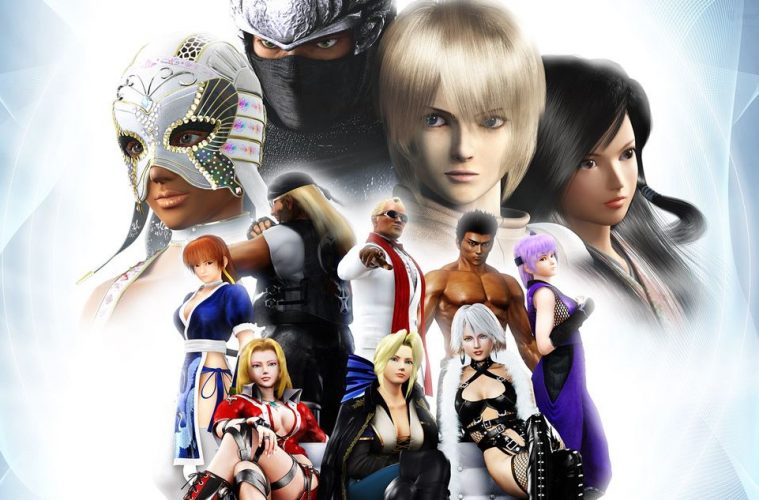Dead or Alive has been one of Tecmo’s (now known as Koei Tecmo) flagship titles next to the likes of Ninja Gaiden, Tecmo Bowl, and the Deception series. For 20 years, we experienced explosive Danger Zone moments, beach volleyball games, and getting caught in holds. We also witnessed a character from a hit FPS game, four characters that came from the grandfather of 3D fighters, and a character from the ongoing hack n’ slash series appear in the games as well. Let’s look back at the humble beginnings of the DOA series during the time where 3D fighters were on the rise.
Dead or Alive-Dead or Alive++ (1996-1998)
 During the mid-1990s, Tecmo was going through some financial trouble at the time. The company asked Tomonobu Itagaki and his team to create a game similar to Virtua Fighter since that game was dominating Japanese arcades and the tournament scene. Itagaki wanted the game to stand out from the competition, such as blending sexuality and violence together along with the use of motion capture. He is also a huge fan of Virtua Fighter, which was also a plus.
During the mid-1990s, Tecmo was going through some financial trouble at the time. The company asked Tomonobu Itagaki and his team to create a game similar to Virtua Fighter since that game was dominating Japanese arcades and the tournament scene. Itagaki wanted the game to stand out from the competition, such as blending sexuality and violence together along with the use of motion capture. He is also a huge fan of Virtua Fighter, which was also a plus.
On November 26, 1996, Dead or Alive was released for the arcades under the Sega Model 2 hardware, marking the first and only time that Sega license their hardware to the third-party company. The gameplay contains elements from Virtua Fighter while adding in original elements of its own. It relied on speed and quick reaction times, which led to introducing a counter system that focused on a more defensive gameplay. Defensive and Offensive Holds were introduced and it became one of the main staples of the series.
Another mainstay in series was the introduction of the environmental hazards known as Danger Zones that surrounds the arena. It could send a character flying once they are knocked down on the panels, allowing their opponent to get hit with a juggle.
A Sega Saturn port was released one year later in Japan, but it used bitmap and parallax scrolling similar to Virtua Fighter 2 and other Sega AM2 fighters. Tecmo released Dead or Alive for the PlayStation in all regions in 1998, complete with some new changes such as a slightly new gameplay engine, a different graphics engine, two new characters, more costumes, and new background music. While the Saturn/Model 2 version had ring outs similar to Virtua Fighter, the PlayStation version had infinite stages similar to Tekken.
During that same year, Dead or Alive ++ was released exclusively for the Arcades in Japan under the Sony-ZN1 system, and it was an introduction to Dead or Alive 2. It was based off the PS1 version of the game, complete with the 6-point hold system.
Dead or Alive became a huge success for Tecmo. It pulled a profit of $9.2 million and saved the company from bankruptcy.
Dead or Alive 2-Dead or Alive 2: Hardcore (1999-2000)
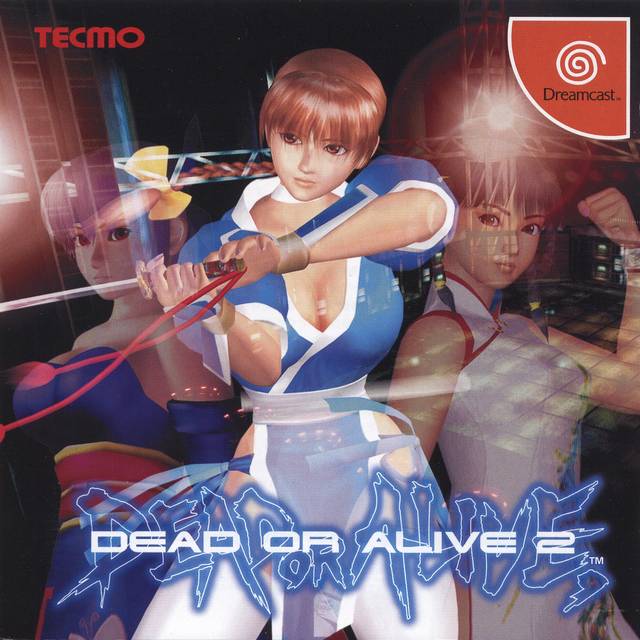
After the success of the first game, Tecmo released Dead or Alive 2 in 1999 for the arcades under the Sega Naomi hardware and 2000 for Sega Dreamcast and PlayStation 2. The gameplay made a drastic departure from the previous game. It borrows more elements from Virtua Fighter while creating an identity of its own.
Using elements from Virtua Fighter 3 and Samurai Shodown 64, DOA2 emphasized more on environments in stages such as terrain, walls, ice/water hazards, and multi-tiered stages that involve one character to be knocked down from one area to another in order to keep the fight going. Danger Zones return in the form of electric and explosive walls. It also introduced the stun system and 2v2 tag mode.
Tecmo released Dead or Alive 2: Hardcore, an update for DOA2, just months after the original release for the PlayStation 2. DOA2 Hardcore added more stages, English voiceovers, more character outfits, new moves, increased frame rate, and more. DOA2 overall became one of the most critically acclaimed entries of the series.
Dead or Alive 3 (2001)
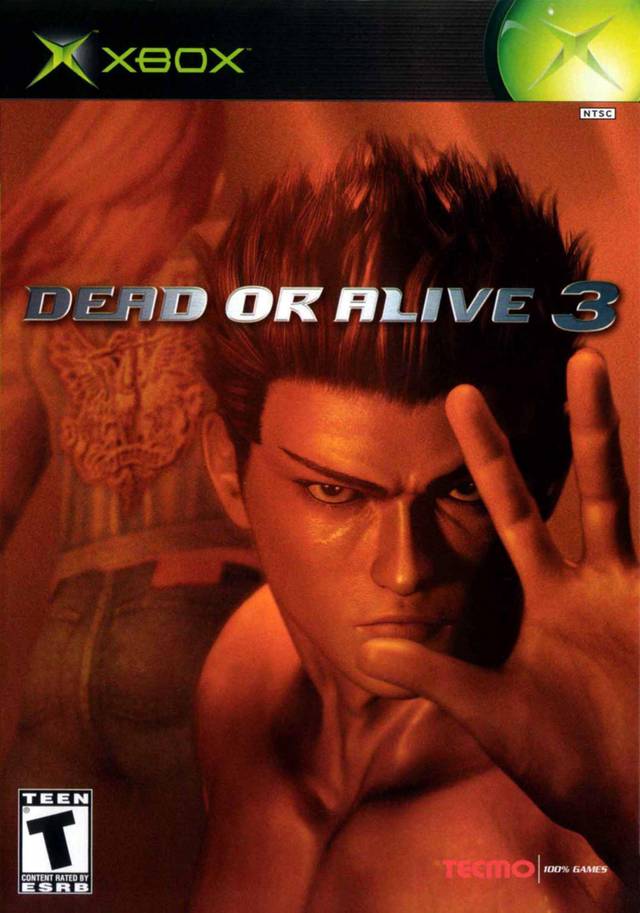
Following with the success of DOA2, Dead or Alive 3 was released on November 15, 2001, for the Xbox in North America, followed by a Japanese and European release in 2002. This was the first game in the series that did not have an arcade release and it was the first DOA game that Yosuke Hayashi worked on as a planner when he first joined the team in 2001.
The gameplay remains unchanged from DOA2, but it made minor tweaks in terms of the hold system, unrestricted 3D-axis movement, and a minor focus on juggling combos. Attack change was introduced in DOA3 as part of the tag mechanic in which you get to switch out one character for another during an attack, keeping the combo going. Finally, getting knocked off of multi-tiered stage results in a knockout if the character has low health.
The Japanese and European versions of DOA3 gained different changes compared to the North American version of the game. Known as DOA3.1 in Japan and DOA3.2 in Europe, both versions added a Time Attack mode, new moves for characters, more costumes, and a CG intro for the game. A booster disc was released for the North American version of the game in 2002 which included all the costumes that appeared in the EU and JP versions of the game without the balance changes.
DOA3 became the third best-selling launch title on the Xbox, next to Halo and Project Gotham Racing. It was also the first third-party game to reach Platinum status.
Dead or Alive Ultimate (2004)

Returning to the fighting game genre, Dead or Alive Ultimate was released for the Xbox in 2004. This mark the first game in the series to have online play, and the first and only game to be released as a compilation. It was also the first game that Yohei Shimbori worked on since he first joined Team Ninja.
DOA Ultimate came bundled with two games: the Sega Saturn version of the first Dead or Alive game and the remake of Dead or Alive 2, known as DOA1 Ultimate and DOA2 Ultimate. DOA1 Ultimate’s gameplay remains unchanged from the Sega Saturn version, with the only difference being that it included English translations and online play.
DOA2 Ultimate’s gameplay retains elements from the original DOA2 games but utilized DOAX’s graphics and DOA3’s gameplay in terms of the 3D-axis movement and the inclusion of Hitomi. It also introduced slopes as an environmental hazard, in which a player could take damage by rolling on the slope or stairs.
Included with DOA Ultimate contains a CG gallery of the ladies of DOA from DOAX, a booster disc containing the extra costumes for DOA3, and a clip from an episode of G4’s Icons detailing Itagaki and the Dead or Alive franchise. There were also two collectors cards bundled in each game: one containing Kasumi and Ayane and the other containing Tina and Leifang.
DOA2 Ultimate, along with DOA3.1, were one of the earlier games that started a foundation for the DOA community with tournaments being held since the mid-2000s. It was the games that started the careers of Tom Brady, Perfect Legend, Black Mamba, and much more.
Dead or Alive 4 (2005)

One year later, Dead or Alive 4 was released exclusively for the Xbox 360 on December 29, 2005. DOA4 became the first game in the main series to get a Mature rating, following after the releases of DOA Xtreme and DOA Ultimate.
The gameplay has changed drastically from DOA3 and DOA Ultimate. The counter system was changed this time around, allowing more attacks to cause critical stun and allowed you to hold out of more situations such as environments, throw advantage, and guard breaks. Taking counter damage from holds are based on the balance amount of how much damage was taken this time around.
One of the most noticeable moments in DOA4 was the inclusion of Spartan-458 (aka Nicole) from the Halo series. The character, along with the Nassau Station stage from Halo 2, appeared in the game as a collaboration between Team Ninja and Bungie Studios. In return, Ryu Hayabusa’s helmet appeared in Halo 3 and resurfaces again in The Master Chief Collection.
DOA4 was one of the fighting games that experienced eSports for the first time. It appeared in tournaments such as World Cyber Games, CGS, and EVO 2006. Players such as YouTube personality Swoozie, MASTER, Vanessa, and Chosen1 made their mark in the scene. Black Mamba became the last MVP of CGS during that time.
Dead or Alive Dimensions (2011)

Six years later after the release of DOA4, Dead or Alive Dimensions was released on May 24, 2011 for the Nintendo 3DS, marking the first DOA game since DOA3 to receive a Teen rating, first DOA game to appear on a Nintendo console, the first DOA fighting game to appear on a handheld, first game that Yohei Shimbori worked on as a director, and the first DOA game to be released without Itagaki’s involvement. DOAD celebrates the 15 year anniversary of the franchise.
DOAD’s Story Mode is a recap of the first four DOA games from DOA1 to DOA4, with the final chapter focusing on Helena’s side of the story. The gameplay is a combination of DOA4 and DOA3, and it incorporates touch screen features to use the move list when needed. Stages are borrowed from DOA2, DOA3, and DOA4, with some original stages added. The Geometrical Power Plant from Metroid Other M, a game that Team Ninja and Nintendo worked on, also makes an appearance with Ridley and Samus making a cameo.
The game was banned in Sweden, Norway, and Denmark due to underage issues with three characters: Kasumi, Ayane, and Kokoro.
Dead or Alive 5/Ultimate (Arcade)/Last Round (2012-2015)
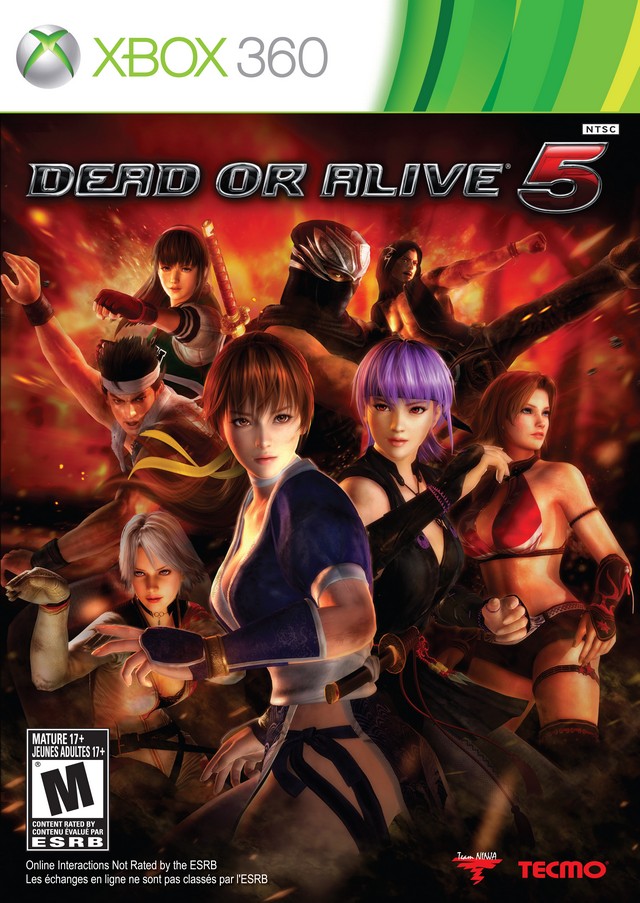
Dead or Alive 5 was released on September 25, 2012, for the Xbox 360 and PlayStation 3. This marked the first DOA game to be released on a Sony console since 2000 with Dead or Alive 2 Hardcore.
The gameplay is based on DOA3.1 but with added changes. Characters fight on highly destructive stages that go beyond regular Danger Zone areas. The game took a more realistic route in terms of graphics and introduced sweat and dirt physics on characters. New to DOA5 is the use of Power Blows, Critical Burst, and Cliffhangers. Power Blows are supers, Critical Bursts leaves the opponent in a defenseless state when hit, and Cliffhangers is a quick-time event in which one player gets a chance to knock their opponent off while hanging from a cliff while the other player defends themselves.
Team Ninja worked in collaboration with Sega AM2 team to add Akira Yuki, Pai Chan, and Sarah Bryant of the Virtua Fighter series to the roster. Sega AM2 also collaborated in some of the development processes of the game as well, meaning that some of the elements from Virtua Fighter 5 Final Showdown appeared in DOA5.
A handheld version, titled Dead or Alive 5+, was released on March 19, 2013. While it is a port of DOA5, it includes Combo Challenge, proper tutorial, and cross-play between PS3 and PS Vita owners.
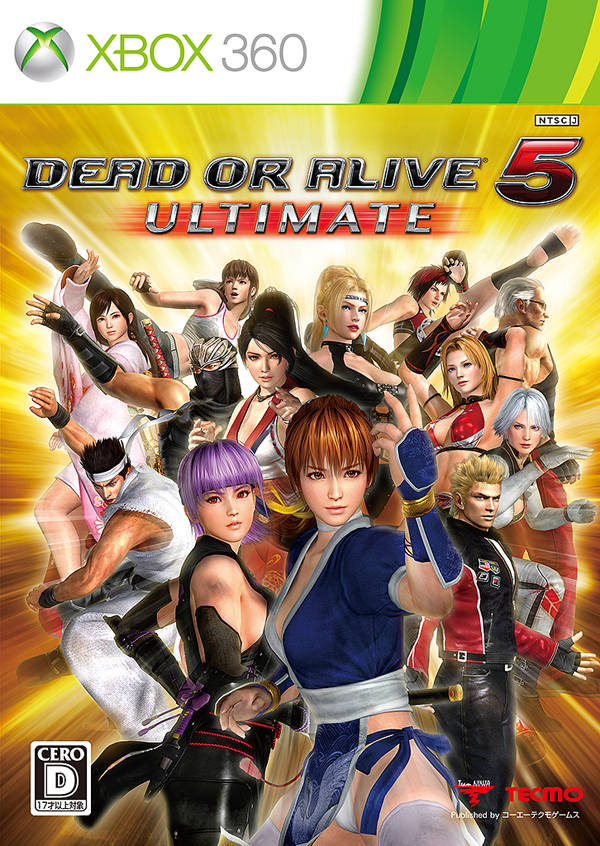
Seven months later, Tecmo released Dead or Alive 5 Ultimate on September 3, 2013, for the Xbox 360 and PlayStation 3. A free-to-play version, known as Core Fighters, was released exclusively for the PlayStation 3 on the same day. The arcade version, known as Dead or Alive 5 Ultimate Arcade, was released on December 24, 2013, under the Sega RingEdge 2 hardware and it was the first DOA game to have an arcade release in 13 years since Dead or Alive 2: Millennium. It used the Sega’s ALL.Net P-ras MULTI Ver. 2 digital distribution platform.
DOA5U incorporated the elements found in DOA5+; retaining the Combo Challenge and tutorial mode while adding a Team Fight mode in which players compete under Team Battle rules. The gameplay was retweaked in this update with the addition of Power Launchers in which it is used in a similar manner to Power Blows. The only difference is that it launches your opponent high into the air, creating juggle combos for advanced players. The online ranking system has changed in DOA5U with the introduction of the Character Point system in which players can let others know how good they used their character.
DOA5U added five more characters which include Ninja Gaiden’s Rachel and Momiji, returning characters Ein and Leon, and Virtua Fighter’s Jacky Bryant. During the arcade release, three more characters were introduced to the series: Marie Rose, Phase-4, and NyoTengu. All three of them were later ported to the consoles via DLC during the course of 2014.

Two years after the release of DOA5U, Team Ninja released Dead or Alive 5 Last Round on February 17, 2015, for the Xbox 360, Xbox One, PlayStation 3, and PlayStation 4, and March 30, 2015, for Steam.
The gameplay remains unchanged from DOA5U, only with a couple of balance changes to every character and the addition of two more characters: Raidou and Honoka. The current gen consoles (XB1 and PS4 versions) received extra content to match the arcade version, as well as adding two new stages and using the Soft Engine to enhance the softness of the characters’ bodies.
Since the release of Senran Kagura costume DLC, the XB1, and PS4 version introduced a costume breaker mechanic for certain DLC costumes in which a character’s clothes can be destroyed due to a hard knockdown or a Critical Burst, similar to Sega AM2’s Fighting Vipers series. Recently, DOA5LR added Naotora Ii, a guest character from the Samurai Warriors series, as a playable character.
The Future of DOA
For 20 long years, the Dead or Alive series made a name for itself in the fighting game genre. Outside of fighting games, Tecmo introduced the Dead or Alive Xtreme series. The first game, Dead or Alive Xtreme Beach Volleyball, was released on 2003 for the Xbox. It spawned two more sequels: Dead or Alive Xtreme 2 for the Xbox 360 in 2006 and Dead or Alive Xtreme 3: Fortune and Venus for the PlayStation 4 and PlayStation Vita in 2016 only for Asian territories.
With the DOA Festival coming up soon, as well as the ongoing support that Team Ninja has for the tournament scene and the fans, who knows what surprises they have in stored this weekend. The Dead or Alive Festival will go live on July 9, 2016, at the Osaki Core Bright Hall in Tokyo, Japan. NicoNico and YouTube will be streaming the event at 1:30PM JST/12:30AM EST, and it is the next stop in the Battle Royal 2016 series, followed by Summer Jam X in August.
From the fans and the DOA community, thank you, Tomonobu Itagaki, for starting the franchise. Thank you, Yosuke Hayashi and Yohei Shimbori, for continuing where the series left off. Thank you, Tom Lee and Yasushi Tani for help supporting the competitive scene. Most importantly, thank you Team Ninja for providing everyone 20 years of Fighting Entertainment.
Follow Virtua Kazama on Facebook | Follow Action A Go Go on Twitter and Instagram |Be sure to leave your thoughts in the comments section!
Virtua Kazama (real name Cory Mewborn) is a DOA player and a fighting game researcher. His favorite type of games are fighters, platformers, and beat em ups. Outside of video games, he enjoys watching professional wrestling, listening to horrorcore rap music, and playing basketball with friends.

